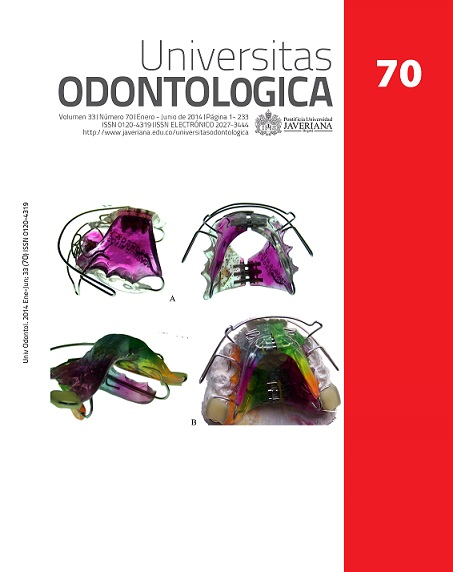Abstract
Background: A retrospective transversal descriptive study was carried out with medical records of children with cleft lip and palate (CLP) seen at the Universidad del Valle’s Hospital (Cali, Colombia) between 2002 and 2011. Purpose: To describe socio-demographic and maternal characteristics, pregnancy risks, and clinical characteristics of affected structures of children with CLP. Methods: 170 medical records of children with CLP (105 boys and 65 girls) were reviewed. A form was designed to collect information about associated syndromes, type of anomaly, medical background of the mother, socioeconomic status, and medications taken during the first trimester of pregnancy. Results: There were associated syndromes in 4 % of the patients. Left lip-palate fissure (LPF) was the most prevalent in both sexes. Hypertension was the main antecedent (9%) among mothers, prevalence of left FLP in both genders, medical history of hypertension in 9% of mothers. 42% of the population belonged to the stratum 1 (low-low) socioeconomic, which in Colombia is determined through the utility bills. There were not important findings regarding medications. Conclusions: Most of the cases of CLP were non-syndromic, males were most affected, and left unilateral FLP was the most prevalent.
KEYWORDS
cleft lip; cleft palate; cleft lip and palate; lip-palate fissure; craniofacial anomalies
This journal is registered under a Creative Commons Attribution 4.0 International Public License. Thus, this work may be reproduced, distributed, and publicly shared in digital format, as long as the names of the authors and Pontificia Universidad Javeriana are acknowledged. Others are allowed to quote, adapt, transform, auto-archive, republish, and create based on this material, for any purpose (even commercial ones), provided the authorship is duly acknowledged, a link to the original work is provided, and it is specified if changes have been made. Pontificia Universidad Javeriana does not hold the rights of published works and the authors are solely responsible for the contents of their works; they keep the moral, intellectual, privacy, and publicity rights.
Approving the intervention of the work (review, copy-editing, translation, layout) and the following outreach, are granted through an use license and not through an assignment of rights. This means the journal and Pontificia Universidad Javeriana cannot be held responsible for any ethical malpractice by the authors. As a consequence of the protection granted by the use license, the journal is not required to publish recantations or modify information already published, unless the errata stems from the editorial management process. Publishing contents in this journal does not generate royalties for contributors.


